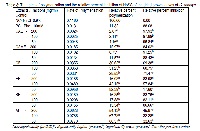Comparative studies on antisickling properties of brown and green leaves of Carica papaya Linn. (Caricaceae)
Keywords:
Carica papaya, Sickle cell disease, crude aqueous extract, rude aqueous methanol extract and fractionsAbstract
Sickle Cell Disease (SCD) is characterised by non-covalent polymerisation of the haemoglobin under hypoxia conditions and this promotes red blood cell sickling. Inhibition of sickle cell haemoglobin polymerization is one of the areas of focus in the management of SCD. Dried Carica papaya leaves are used in traditional herbal remedies for the management of sickle cell anaemia; without specifying if it is the dried green or brown leaf. This study was aimed at verifying the antisickling activity of the crude aqueous extract, crude methanol extract and fractions of dried brown and green leaves of Carica papaya. The method used was the sickle cell haemoglobin polymerization inhibition experiment measured with the Ultra Violet (UV) spectrophotometer. Sodium metabisulphite was used as a deoxygenating agent while isotonic saline (0.9% NaCl) was used as the negative control and phenylalanine as a positive control. The results obtained showed that crude aqueous extracts of both the green and brown leaves exhibited high level of inhibition of sickled haemoglobin (HbSS) polymerization at 200 mg/ml (97.76% and 93.25% ), 100 mg/ml (95.89% and 97.93%) also, 50 mg/ml (97.89% and 95.84%) respectively which compared favourably and significantly (p<0.05) with that of phenylalanine. The summary of the antisickling activity of the crude extracts and fractions of both the green leaves and brown leaves of C. papaya is Crude aqueous>Crude aqueous methanol> Butanol>Chloroform>Ethyl acetate>Aqueous. This study showed that the extracts exhibited the potential of inhibiting polymerization of sickle cell haemoglobin thus would be beneficial in the management of sickle cell disease.
References
. Weatherall, D., Hofman, K., Rodgers, G., Ruffin, J. and Hrynkow, S. A case for developing North-South partnerships for research in sickle cell disease. Blood. 2005; 105: 921-23
. Pauling, L., Harvey, A.I., Singer, S.J. and Wells, I.C. “Sickle Cell Anemia, a Molecular Disease” Science 1949; 110: 543-548
. Bunn, F.H. Pathogenesis and Treatment of Sickle Cell Disease. The New Eng. J. Med., 1997; 337: 762-769
. Ayoola, P.B. and Adeyeye, A. Phytochemical and nutrient evaluation of Carica papaya (Pawpaw) leaves. Int. J. of Research and Reviews in Applied Sci. 2010; 5:(3) 325 – 328.
. Rupprecht, J.K., Chang, C.J., Cassady, J.M., McLaughlin, J.L. and Mikolajezak, K.L. Asimicin, a new cytotoxic and pesticidal acetogenin from the pawpaw, Asimina triloba (Annonaceae). Heterocycles 1986; 24: 1197-1201
. Tebekeme, O. and Diepreye, E. Reduction of hydrogen peroxide-induced erythrocyte damage by Carica papaya leaf extract. Asian Pacific J. of Tropical Biomed. 2012; 2: 449-453
. Anaga, A.O. and Onehi, E.V. Antinociceptive and anti-inflammatory effects of the methanol seed extract of Carica papaya in mice and rats. Afr. J. of Pharm. And Pharmacol. 2010; 4: 140-144
. Giove, N.R. Traditional medicine in the treatment of enteroparasitosis. Rev Gastroenterol Peru. 1996; 16: 197-202.
. Imaga, N.A., Adenekan, S.O., Yussuph, G.A., Nwoyimi, T.I., Balogun, O.O. and Eguntola, T.A. Assesment of antioxidation potential of selected plants with antisickling property. J.Med.Plants Research 2010; 21: 2217-2221.
. Imaga, N.A. and Adepoju, O.A. Analyses of antisickling potency of Carica papaya dried leaf extract and fractions. Journal of Pharmacognosy and Phytotherapy. 2010; 2:97-102.
. Noguchi, C.T. and Schechter, A.N. Sickle haemoglobin polymerization in solution and in cells. Ann. Rev. Biophyschem. 1985; 14: 239-246
. Noguchi, C.T. Inhibition of sickle hemoglobin gelation by amno acids and related compounds. Biochemistry 1978; 17:5455-5459.
. Nwaoguikpe, R.N., Ejele, E.A. Amino acid profile of some anti-sickling plant extracts and their haemoglobin polymerization inhibition. Nig. J. Bchm. Mol. Biol., 2010; 25(2): 5359.
. Ekeke, G.I. and Shode, F.O.. Phenylalanine is the predominant antisickling agent in Cajanus cajan seed extract. Plant Medica. 1990; 56: 41-3
. Osuagwu, C.G. Mechanism of the anti-sickling effects of Cajanus cajan and Phenylalanine. Nig. J Biochem Mol Bio. 2010; 25: 68–71.
. Iyamu, E.W., Turner, E.A. and Asakura, T. In vitro effects of NIPRISAN (Mix-0690), naturally occurring potent antisickling agent. Br. J. Haematology. 2002; 118: 337-343
. Parida S, Patro VJ, Mishra US, Mohapatra L, Sannigrahi S Anthelmintic Potential of Crude Extracts and Its Various Fractions of Different Parts of Pterospermum Acerifolium Linn. Int. J. Pharm. Sci. Rev. Res., 2010; 1(2): 107-111.
. Elekwa, I., Monanu, M.O. and Anosike, E.O. “Effects of aqueous extracts of Zanthoxylum macrophylla roots on membrane stability of human erythrocytes of different genotypes,” Biokemistri, 2005; 17(1): 7–12.
. Onah JO, Akubue PI, Okide GB. The Kinetics Of Reversal of Pre-Sickled Erythrocytes by The Aqueous Extracts of Cajanus Cajan Seeds. Phytother. Res., 2002; 16: 1-3.
. Egunyomi A, Moody JO, Eletu OM Antisickling activities of two ethnomedicinal plant recipes used for the management of sickle cell anaemia in Ibadan, Nig. Afr. J. Biotechnol., 2009; 8: 20-25



